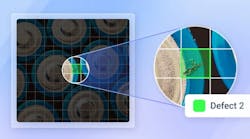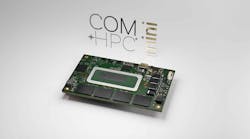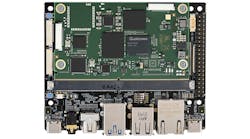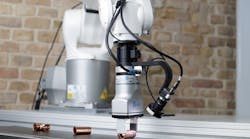Andrew Wilson, Editor, [email protected]
Age-related macular degeneration (AMD) of the eye results from damage or breakdown of the macula, a small area at the back of the eye that enables the perception of fine details. Although macular degeneration reduces vision in the central part of the retina, it does not affect peripheral vision. Therefore, patients with the disease may see large objects but not the fine details within them.
To address this disease, VisionCare Ltd. (Yehud, Israel; www.visioncare.co.il) has developed an ophthalmic device called the Implantable Miniaturized Telescope (IMT). This micro-Galilean telescope is implanted in place of the eye's natural lens and is held in position using a surgical procedure similar to that used for standard intraocular-lens (IOL) implants. The IMT contains several microlenses that provide a nominal magnification of 3x in combination with the eye's cornea.
The telescope projects magnified images on the retina that allow a macular-degenerated patient to watch television, read, identify faces, and scan an area without having to wear special glasses. According to the company, clinical trials of the IMT have resulted in improved distance-vision and near-vision acuity in most patients, providing them the ability to read or recognize letters of printed material in newspapers and books.
Because the telescope is implanted in the eye, every IMT lens needs to be tested individually. Each lens undergoes quality-assurance tests to verify that it meets original specifications. Accordingly, production-line tests must evaluate the modulation transfer function (MTF), the focal lens, and the contrast of an image produced by the lens.
"Two types of test stations are used to test the IMT," says Gideon Dotan, research-and-development manager at VisionCare. "The first is a dry test station and the second a wet test station that imitates the human eye in which the lens is replaced with our IMT." The dry test bench contains the resolution of a USAF 3bar target from Melles Griot (Rochester, NY, USA; www.mellesgriot.com) that is illuminated from the backside. A lens directs the rays onto the back surface of the IMT, and the outgoing rays are focused by another lens onto a TM-7 CCD camera from Pulnix America (Sunnyvale, CA, USA; www.pulnix.com). No objective lens is used in the camera.
To measure the MTF, a captured image is delivered to a Pentium II-based computer using a FlashPoint frame grabber from Integral Technologies (Indianapolis, IN, USA; www.integraltech.com). Taking a scan of the image perpendicular to the edge results in a computed edge-scan or edge-spread function. A derivative of the line-spread function then shows how the sharp edge of the image is spread by the imaging process. By taking a fast Fourier transform (FFT) of this result, the line-spread function in the frequency domain can be computed, which produces the MTF. This measurement provides information about what frequencies are attenuated by the imaging system.
To perform this computation, Dotan and his colleagues used Matlab and the Image Processing Toolbox from The MathWorks (Natick, MA, USA; www.mathworks.com). "Matlab was used since a previous test station we had developed used the package," explains Dotan. And, even though the other test station performs different tasks, the human-machine interface and the output presentation were similar.
"While we could have used Microsoft C++ and incorporated public-domain FFT code, it was easier and much faster to implement it with Matlab," he says. In the test system, Matlab's FFT algorithm is used to compute the discrete Fourier transforms of a sequence. "Developing the test system using Matlab took less than 300 hours. Had we used C++, it would have taken at three to four times longer to develop the system," adds Dotan.






